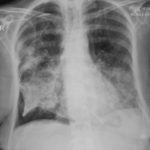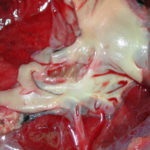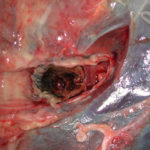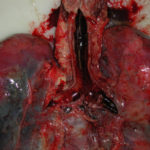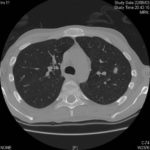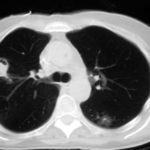Date: 26 November 2013
Aspergillus terreus Thom. Conidial head of Aspergillus terreus. Conidial heads are compact, columnar and biseriate. Conidiophores are hyaline to slightly yellow and smooth walled.
Copyright:
With thanks to G Kaminski. D Ellis and R Hermanis Mycology Unit, Women’s & Children’s Hospital , Adelaide, South Australia 5006
Notes:
Colonies on CYA 40-50 mm diam, plane, low and velutinous, usually quite dense; mycelium white; conidial production heavy, brown (Dark Blonde to Camel, 5-6D4); reverse pale to dull brown or yellow brown. Colonies on MEA 40-60 mm diam, similar to those on CYA or less dense. Colonies on G25N 18-22 mm diam, plane or irregularly wrinkled, low and sparse; conidial production light, pale brown; brown soluble pigment sometimes produced; reverse brown. No growth at 5°C. Colonies at 37°C growing very rapidly, 50 mm or more diam, of similar appearance to those on CYA at 25°C.Conidiophores borne from surface hyphae, stipes 100-250 μm long, smooth walled; vesicles 15-20 μm diam, fertile over the upper hemisphere, with densely packed, short, narrow metulae and phialides, both 5-8 μm long; conidia spherical, very small, 1.8-2.5 μm diam, smooth walled, at maturity borne in long, well defined columns.Distinctive featuresVelutinous colonies formed at both 25°C and 37°C, uniformly brown, with no other colouration, and minute conidia borne in long columns make Aspergillus terreus a distinctive species.
Images library
-
Title
Legend
-
Subacute IPA in rheumatoid nodules of the lung. in a patient with rheumatoid arthritis. Histology sections stained with H&E
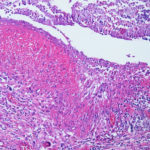
-
Subacute IPA in rheumatoid nodules of the lung. in a patient with rheumatoid arthritis. Histology sections stained with H&E.
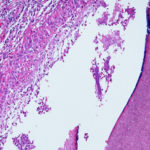
-
22/09/08 This chest radiograph shows bilateral hazy diffuse airspace disease predominating in the lower lungs with subtle nodularity in upper zones.
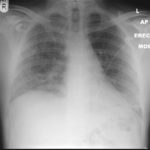
-
Further details
Images 3a,b,c 02/07/07
CT thorax, after 2 weeks high dose erythromycin, showing a 2.8cm speculated lesion in the right upper lobe with a further 1.6cm similar mass on the left upper lobe also with a tendency for a central cavitation, and ill defined consolidation involving the peripheral aspect of both upper lobes and to a lesser extent right middle and both lower lobes.History:
A 71 year old woman presents with persistent dry cough. Her second CT scan of thorax shows lesions in the right and left upper lobes with ill defined consolidation in other areas (see images 3a, 3b and 3c). A PET scan is positive. She underwent right thoracotomy and sub-lobar wedge resection. Aspergillus grown from tissue and sputum grows Pseudomonas. Histology confirms the nodule to be non-small cell carcinoma (adenocarcinoma) but other lung areas show organizing pneumonia and another abscess formation with a cluster of branching septate hyphae. Despite starting itraconazole and oral ciprofloxacin she deteriorated with Type 1 respiratory failure. She was intubated and ventilated and switched to intravenous voriconazole and ceftazidime. She developed acute renal failure and then Enterococcus faecium bacteremia and she died 3 days later.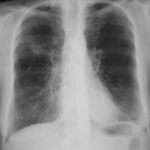 ,
,  ,
, 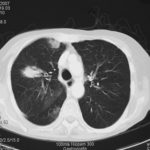 ,
, 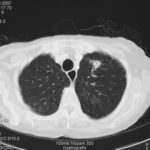 ,
,  ,
, 